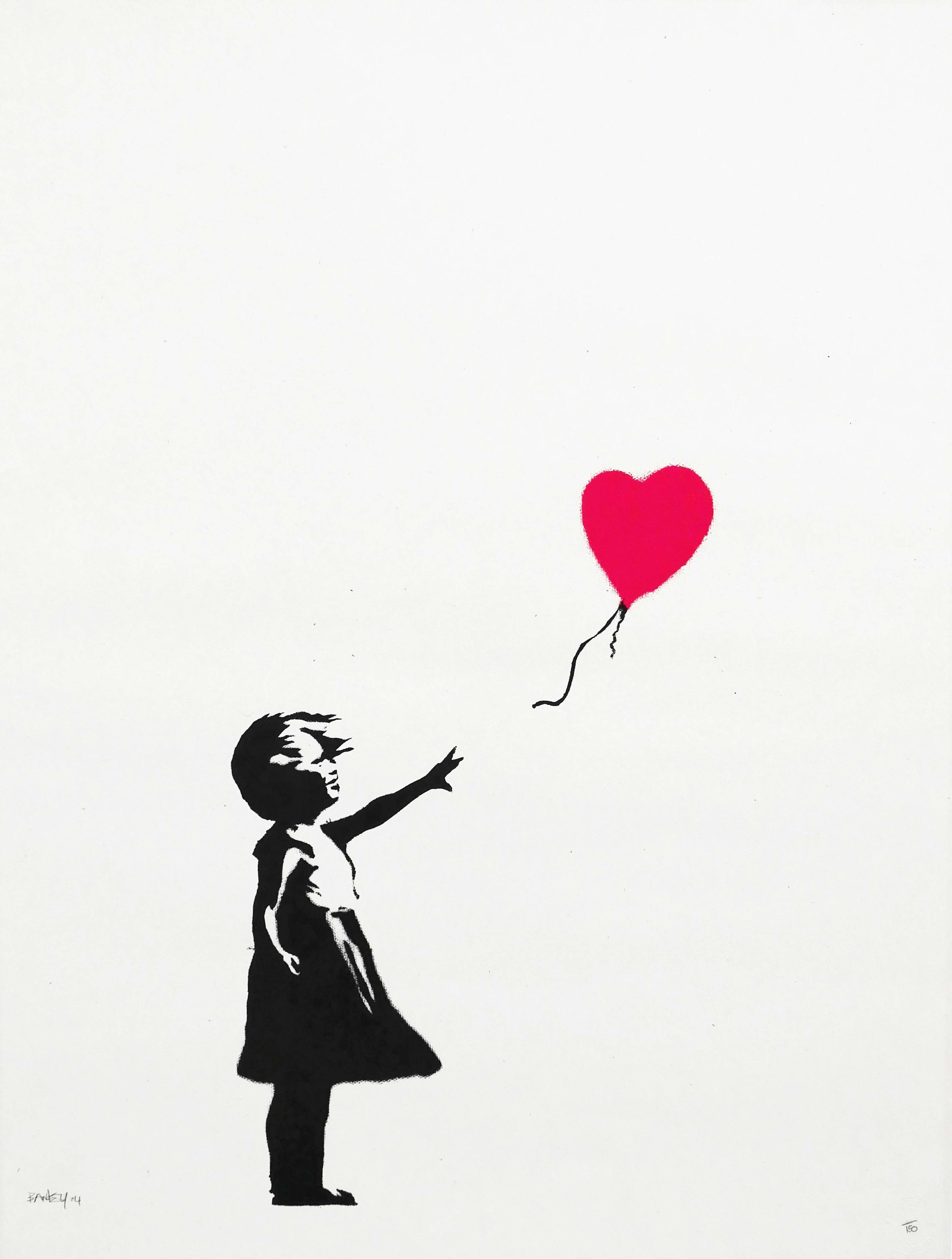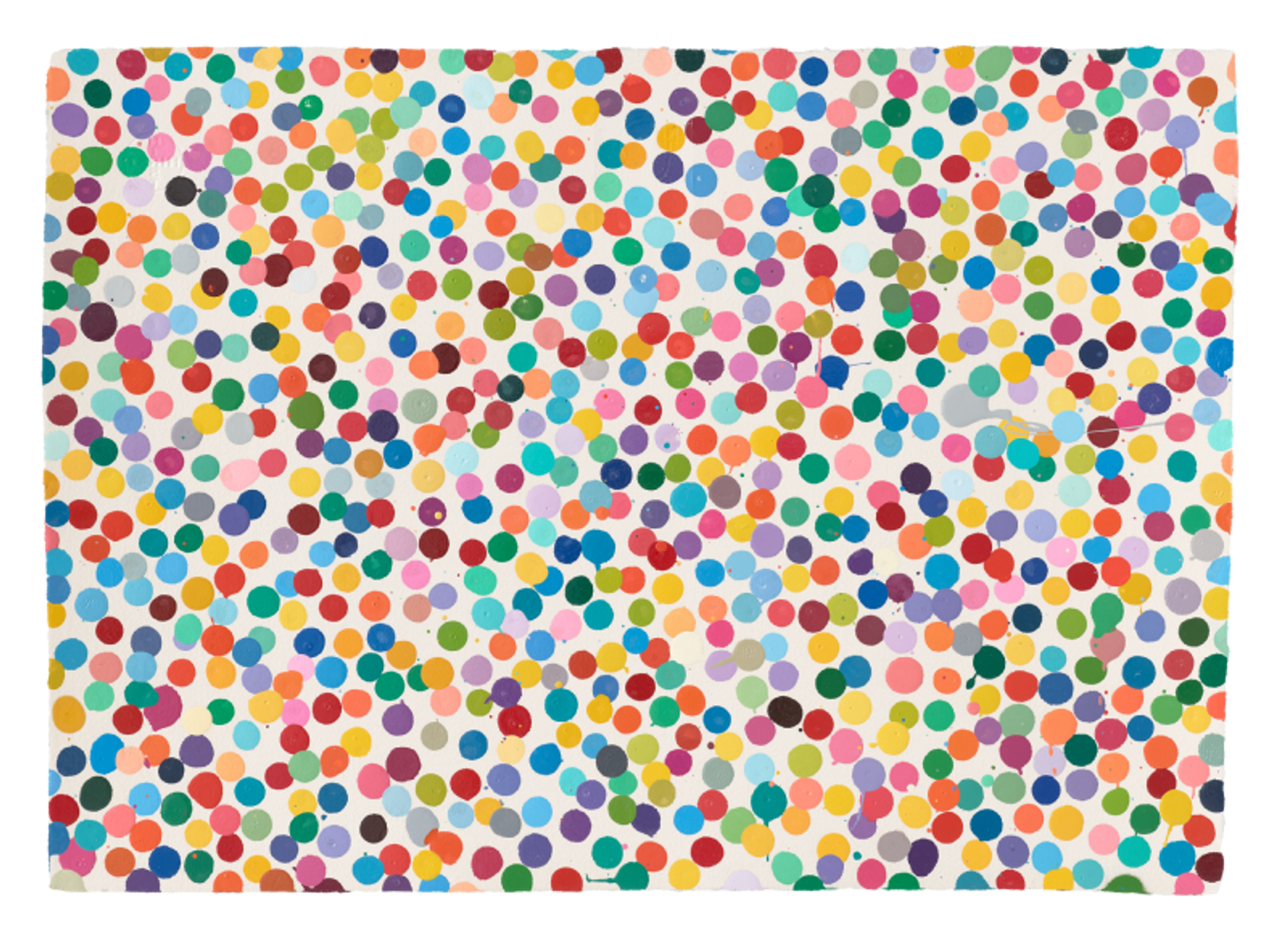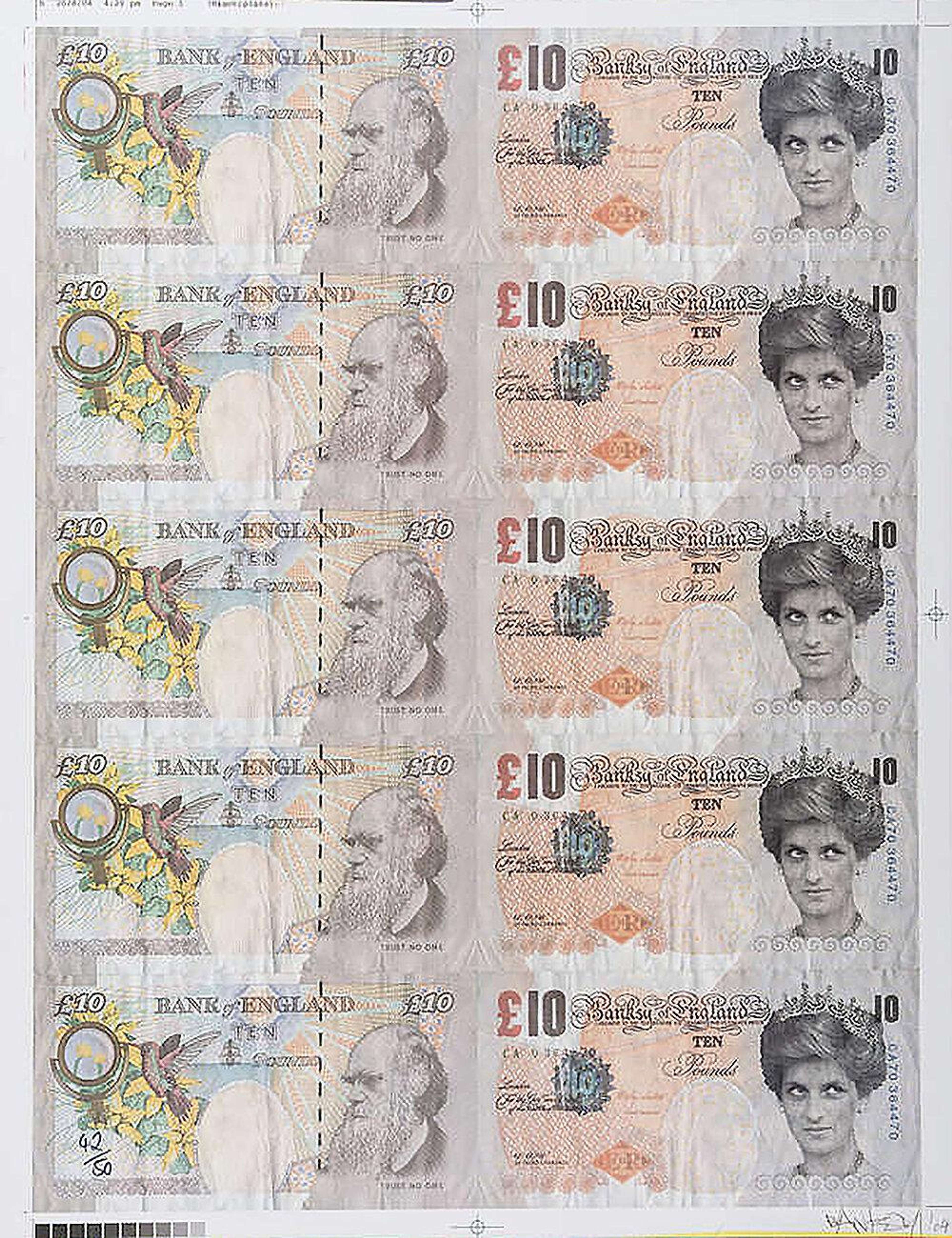The Rise of Millennial Art Collectors
 Infinity Nets (WR) © Yayou Kusama 2004
Infinity Nets (WR) © Yayou Kusama 2004Market Reports
Art collecting is traditionally associated with wealthy connoisseurs and established collectors. Today, a new generation is making its mark on the art market. Millennials, known for their unique perspectives and forward-thinking approach, are embracing art not only as a form of self-expression but also as an alternative investment. This growing trend is disrupting traditional models and creating exciting opportunities for investors as well as emerging artists. From the changing landscape of art collecting to the digital revolution in the art market, we take a look into the rise of millennial art collectors and explore how their distinctive approach to art investment is shaping this dynamic and transformative movement.
The Rise of Millennial Art Collectors as a New Force in the Art Market
In recent years, millennials have emerged as a powerful force in the art market, bringing a fresh perspective and redefining the dynamics of art investment. Traditionally, art collecting has been associated with older, affluent individuals, but millennials are rapidly embracing art as an alternative investment. So, what is driving this shift?
One key factor is the desire for unique and tangible assets. Contrary to previous generations, millennials are less interested in traditional investments like stocks and bonds; they seek out investments that reflect their individuality and values. Art, with its expressive power and cultural currency, has become an appealing option. Millennials view art as a way to express their personal taste and aesthetic preferences, making it a meaningful addition to their investment portfolio.
The rise of millennial art collectors is also reshaping the art market by diversifying the formats of art on the market. This generation is more likely to invest in digital art like NFTs, installations, and multimedia pieces, expanding the boundaries of what is considered 'collectible'. Their willingness to explore new mediums and unconventional art forms is creating a more varied and dynamic art market.
The Changing Landscape of Art Collecting: How Millennials are Disrupting the Art Market
Art collecting has a rich history rooted in the patronage of the elite and the art establishment of prestigious institutions. However, the landscape of art collecting is undergoing a significant transformation, driven by the unique characteristics and preferences of millennials.
Unlike previous generations of art collectors who valued traditional forms of high art, millennials are open-minded about what constitutes art. Additionally, their adoption of digital platforms, social media and online marketplaces to acquire art is breaking down the barriers to entry. In 2020, 69% of millennial collectors purchased art online from March to September, while a further 66% bought two to five pieces. The online marketplace has ushered in a new generation of buyers - and this shift has opened up new avenues for artists, too. With digital spaces, artists can showcase their work and reach a global audience without the need for traditional gallery representation.
In another sense, millennials are more value-driven than their predecessors. They prioritise experiences and storytelling when it comes to art, seeking authentic connections and narratives that resonate with their personal lives and values. A massive 95% of collectors in their twenties and thirties cited “emotional benefits or passion for art” as their chief incentive for buying. They are less inclined towards classical pieces and are more drawn towards innovative contemporary pieces that flout conventions.
As a result, they are drawn to artists who are address social issues, cultural diversity, and environmental concerns, typically contained within subcultural genres like contemporary and street art. The art they collect becomes a reflection of their identity and a catalyst for conversations within their communities.
Technology plays a vital role in this disruption as well. Digital advancements have not only facilitated access to art but also introduced innovative forms of artistic expression. From virtual reality installations to blockchain-based NFTs, millennials are embracing these cutting-edge technologies, further blurring the boundaries between traditional and digital art.
Another notable shift is the emphasis on sustainable and ethical practices. Millennials are conscious consumers who prioritise environmentally friendly and socially responsible choices. This mindset extends to their art collecting habits, as they seek out artists and galleries that align with their values of sustainability, inclusivity, and fair representation. As art New York-based art advisor Heath Flow suggests: “Truly engaging millennial collectors requires galleries to rethink ideas of transparency, flexibility, diversity, and sustainability. The gallery business model must adapt to consider these elements.”
 Image © Tate / Portrait of an Artist (Pool with Two Figures) ⓒ David Hockney, 1972
Image © Tate / Portrait of an Artist (Pool with Two Figures) ⓒ David Hockney, 1972The Appeal of Art to Millennials: Why Art is More Than Just a Decorative Object
Art has always held a special place in the human experience, but for millennials, it goes beyond being a mere decorative object. The appeal of art to this generation lies in its ability to spark conversations and serve as a reflection of their values and identities.
Millennials value art as a social and cultural currency. As technology has expanded the reach of our communities, owning and engaging with art has become a way to connect with like-minded individuals. Art events, gallery openings, and artist talks are not only opportunities to appreciate artwork but also to network, collaborate, and exchange ideas with other art enthusiasts. In short, millennials see art as a catalyst for social interaction and a platform for cultural dialogue.
Art also aligns with millennials' desire for authenticity and individuality. In a world saturated with mass-produced products and digital experiences, owning a unique piece of art becomes a way to express their distinct taste and personality. They actively seek out artists who challenge conventions, push boundaries, and offer fresh perspectives. By collecting such artworks, millennials feel a sense of pride in supporting emerging talent and contributing to the diversification of artistic expression.
From a design perspective, art seamlessly integrates into millennials' lifestyles. As a generation brought up amid the proliferation of visual media, many millennials have a keen eye for design on and off the screen. They view art as an integral part of their living spaces, turning their homes into personal galleries. Whether it's a large-scale painting or a small print, they curate their environments to reflect their artistic sensibilities.
The Investment Potential of Art: Why Millennials See Art as a Viable Asset Class
Art collecting has transcended its aesthetic appeal and evolved into an up-and-coming asset class, with millennials at the forefront of this shift. Unlike previous generations, millennials view art not only as a form of personal enjoyment but also as a viable investment opportunity. So, why do they see art as a valuable asset class?
Firstly, millennials are drawn to art as a tangible asset in a digital world. With the rise of intangible assets and digital currencies, owning a physical artwork provides a sense of stability and security. And as a generation that came of age amid an economic recession, the appeal of owning a physical asset is heightened. Unlike stocks or cryptocurrencies which can be volatile, art offers a tangible presence and permanence—particularly appealing in an increasingly digitalised, post-pandemic society.
Millennials are also drawn to the potential financial returns of investing in art. Over the years, art has demonstrated its ability to appreciate in value, making it an attractive long-term investment option. While the art market can be unpredictable, strategic collecting and investing in emerging artists have the potential for substantial returns.
Diversification is also appealing. By including art in their asset mix, millennials see that they can reduce their exposure to traditional investment avenues and broaden their overall investment strategy. As a generation that has intimately felt the impact of the 2008 economic crash and the present-day recession, millennials have a vested interest in mitigating the risks or impacts of external shocks. Art investments can provide a hedge against market fluctuations.
The Art Market Goes Digital: How Millennials are Changing the Way Art is Bought and Sold
The advent of digital technology has revolutionised the art market, and millennials are at the forefront of this transformative wave. They have embraced online platforms and digital marketplaces, fundamentally changing the way art is bought and sold.
Millennials are digitally native and accustomed to the convenience and accessibility that technology offers. Online platforms provide them with a vast array of artwork at their fingertips, allowing them to explore and discover artists from all corners of the globe. By eliminating geographical barriers, digital platforms are allowing millennials access a diverse range of art that they may not have encountered otherwise.
Social media plays a pivotal role in this digital art revolution. Millennials are using platforms such as Instagram and TikTok to follow artists, engage with their work, and even make purchases directly from artists' accounts. In fact, the 2020 Hiscox Online Art Trading Report found that 92% of buyers aged under 35 frequent Instagram for art-related content, with 35% of millennial art buyers actually making an art purchase on Instagram.
Many digital marketplaces now exist for art, with even traditional auction houses such as Sotheby’s and Phillips launching virtual auctions. If you’re wondering how to get started with these online platforms, MyArtBroker's services and our open Trading Floor cater to the digital shift in the art market. These platforms offer a low-cost way to discover art, explore new investment opportunities, and connect with fellow collectors. With a dedicated broker service for all our buyers and sellers, MyArtBroker empowers millennials to navigate the digital art market and make informed investment decisions.
The Future of Art Collecting: What the Rise of Millennial Art Collectors Means for the Art World
One significant implication of the rise of millennial art collectors is the increased focus on diversity and representation. Millennials are more attuned to issues of social justice, inclusivity, and cultural diversity, seeking out artists from marginalised communities and demanding equitable representation in galleries, museums, and art institutions. Such a push is giving way to a broader range of perspectives and narratives in the art world.
The art market is also witnessing a shift in power dynamics as millennials challenge traditional gatekeepers and establish new avenues for artistic success. Through social media, online platforms, and direct engagement with artists, millennials are bypassing conventional gallery systems in favour of smaller-scale interactions between the seller (often the artist) and the buyer. This direct relationship allows for greater transparency, authenticity, and collaboration between artists and collectors.
In addition, the future of art collecting will likely hinge on the increased integration of technology. Virtual reality, augmented reality, and blockchain-based assets are transforming the way art is experienced, exhibited, and traded. Millennials, who are early adopters of technology, will continue to embrace these innovations, pushing the boundaries of artistic mediums and enhancing accessibility for global audiences.
Millennial Art Collectors as a Catalyst for Change in the Art World
The rise of millennial art collectors marks a significant turning point in the art world, ushering in a new era of inclusivity, digital integration, and genre. Their unique perspective on art investment and collecting is disrupting traditional models and creating exciting opportunities for artists, investors, and enthusiasts.
Millennials seek authenticity, diversity, and connection in their art experiences. As collectors, they are reshaping the landscape by pushing for greater representation of marginalised voices. With their welcoming of digital platforms and technology, they are transforming the way art is discovered, bought, and sold, breaking down geographical barriers and democratising the art market.
For galleries, brokers, digital marketplaces and artists themselves, adapting to the preferences of millennial art collectors is crucial for future success. Embracing technology, fostering inclusivity, and creating immersive experiences will be key to engaging a generation with a sizeable stake in the future of art collecting.











